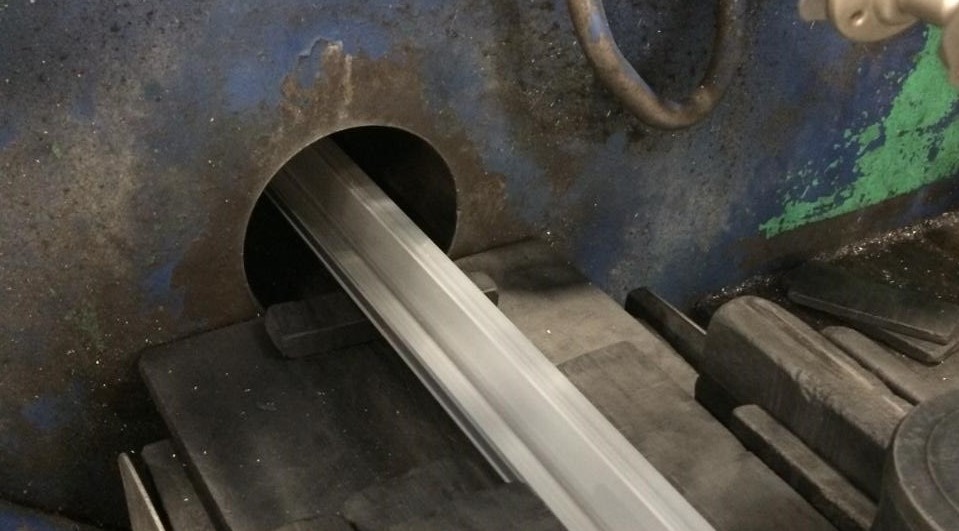Virtually all of the aluminum extrusions and extruded tubing we produce will require further processing. The extrusions may be:
- Cut to length
- Punched
- Holes drilled (and tapped)
- Machined on a mill or lathe
- Anodized
- Powder Coated
- A combination of any of the above processes (and more!)
To ensure the above processes go smoothly, we need to verify that the extrusion practices we follow to create the extruded shapes and tubing are reliable and repeatable. To make sure we utilize the best aluminum extrusion practices, we focus on the 3 T’s:
1. Billet Temperature: This is the temperature of the aluminum when it enters the extrusion press.
- We heat up our raw material (billets) with an induction heater. Induction heating gives us a more uniform temperature throughout the billet than heating with a gas furnace. Since we only need to heat up one billet at a time, it also gives us the flexibility to run small batches—meaning that we don’t have a minimum order size. Finally, the uniform billet temperature helps us minimize dimensional variation of the extrusion.
2. Exit Temperature: This is the temperature of the aluminum as it exits the extrusion press.
- We monitor exit temperature to ensure the required mechanical properties can be achieved once the extrusion is aged to the required temper. If the exit temperature is too high, or too low, the alloying elements within the aluminum will not be distributed evenly.
3. Quench Temperature: This is the temperature the extrusion needs to be at after cooling in order to “lock” the alloying elements into place.
- We have three methods for cooling the extrusions as they exit the press:
- Fans are used to blow air on the parts. This works well for small, thin-walled parts.
- A water mist can be applied to the extrusion to slightly increase the size of the parts.
- For our largest extrusions and tubes, a heavy shower of water is used to cool them quickly.
When the 3 T’s are done correctly, the result is aluminum extrusions with high mechanical properties and minimal dimensional variation.
For parts that receive post extrusion machining, high mechanical properties result in an extrusion that machines well. Small, uniform chips are created as the tools cut the extrusion. These chips are easy to manage and they do not cause the machinist to slow or stop the equipment to clean out the machine.
Minimizing dimensional variation helps the machinist create finished components that are also uniform and easy to assemble. Some of our extruded parts are able to run “lights out.” This allows the machinist to load up the equipment with extrusions prior to the end of their workday, turn off the lights, lock the doors, and let the equipment machine the parts overnight.
Our machining processes and capabilities allow our customers to purchase high quality finished components that are ready for assembly, without the need to manage multiple vendors. If you’re wondering what else our machinists and machines are capable of, contact us today.





